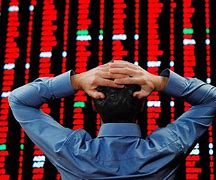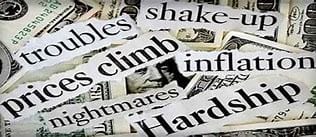Stock Market Crash: What to Do Now


Oke, here’s a SEO friendly opening paragraph for an article about “Stock Market Crash: What to Do Now”, using conversational language & that “friendly” touch:
*
The stock market is like a roller coaster , you go up , you go down . But what happens when it takes a nosedive and crashes ? You’re probably freaking out right now, thinking , “Is this the end ?” Don’t worry, you’re not alone. Market crashes happen. It’s a normal part of the investment cycle , just like seasons change. And while it can be scary, it doesn’t mean your money is gone. The key is to understand what’s happening and what you can do about it . In this guide , we’ll break down the causes of a stock market crash and how to protect your investments. We’ll also talk about what to do if you’re worried about your finances & how to make smart decisions in a chaotic time .
*
Let me know if you have any more requests or if you’d like to try a different approach. We can tweak it to fit your needs.
Stock Market Crash: What to Do Now?
The stock market is a volatile beast. While it can offer impressive returns over time, it also has its share of ups and downs. A stock market crash, a sudden and dramatic decline in stock prices, can be a scary experience for investors. But don’t panic! Understanding the basics and taking proactive steps can help you navigate these turbulent waters.
What is a Stock Market Crash?
A stock market crash is a rapid and significant decline in stock prices across a broad market. It’s not just a few stocks dipping; it’s a widespread, almost collective fall in value. These crashes are often characterized by panic selling, where investors rush to sell their assets, exacerbating the downturn.
Understanding the Basics
Think of the stock market as a giant marketplace where investors buy and sell shares of companies. When the market is “up,” it means investors are optimistic about the future, driving demand and prices higher. A “crash” happens when this optimism evaporates, leading to widespread selling and a downward spiral in prices.
Causes of a Stock Market Crash
While there’s no single cause for a stock market crash, they often stem from a combination of factors, including:
- Economic downturns: Recessions, high unemployment, and inflation can erode investor confidence and trigger selling.
- Geopolitical events: Wars, natural disasters, and political instability can create uncertainty and lead to market volatility.
- Financial bubbles: Excessive speculation and inflated asset prices can lead to a sudden burst, triggering a crash.
- Loss of confidence: Rumors, scandals, and market manipulation can erode investor confidence and lead to a sell-off.
How to Identify a Potential Crash
While predicting a crash with certainty is impossible, there are some warning signs to look out for:
- High valuations: When stocks are trading at extremely high price-to-earnings ratios, they may be overvalued and vulnerable to a correction.
- Increased volatility: A surge in market fluctuations, with large swings up and down, can indicate heightened investor anxiety.
- Negative news: A stream of negative economic news, political turmoil, or corporate scandals can undermine investor confidence.
- Declining economic indicators: Falling GDP growth, rising unemployment, and other economic indicators can signal a looming downturn.
What to Do During a Stock Market Crash
The most important thing is to stay calm and avoid knee-jerk reactions. Here’s how to approach a stock market downturn:
1. Stay Calm and Don’t Panic Sell
The worst thing you can do during a crash is to panic sell. Selling your stocks at a loss will only lock in your losses and leave you with less capital for future investments.
2. Analyze Your Portfolio
Take a close look at your portfolio and understand the underlying assets. Identify your most valuable holdings and those that might be more vulnerable to the crash.
3. Adjust Your Investment Strategy
If you’re holding high-risk investments, consider shifting some of your portfolio to more conservative assets like bonds or cash. This can help preserve capital during a downturn.
4. Diversify Your Investments
A diversified portfolio, spread across different asset classes and sectors, can help mitigate risk and reduce the impact of a stock market crash.
How to Protect Your Investments During a Crash
While you can’t entirely eliminate the risk of a crash, there are steps you can take to protect your investments:
1. Don’t Sell Everything
Remember that a crash is temporary. Trying to time the market perfectly is incredibly difficult, and you could miss out on potential future gains.
2. Consider Dollar-Cost Averaging
This strategy involves investing a fixed amount of money regularly, regardless of market conditions. This helps smooth out your average purchase price and reduce the impact of market volatility.
3. Seek Professional Advice
If you’re unsure how to navigate the market downturn, consult with a financial advisor. They can provide personalized guidance and help you develop a strategy that aligns with your financial goals.
What to Do After a Stock Market Crash
A stock market crash can be a painful experience, but it’s also an opportunity to re-evaluate your investment strategy and come out stronger.
1. Re-evaluate Your Goals
Take some time to reassess your financial goals and ensure your investment strategy is still aligned with them. You may need to adjust your timeline or risk tolerance.
2. Consider Rebalancing Your Portfolio
After a crash, your asset allocation may be out of balance. Rebalancing your portfolio by buying back into stocks or adjusting your asset mix can help restore your risk profile.
3. Stay Informed and Stay Patient
The stock market is cyclical, and it will eventually recover. Stay informed about market trends and be patient, allowing time for the market to bounce back.
How to Prepare for a Stock Market Crash
The best way to weather a storm is to be prepared. Here are some proactive steps you can take:
1. Build an Emergency Fund
Having a cash reserve for unexpected expenses can help you avoid selling investments at a loss during a crash. Aim for 3-6 months of living expenses.
2. Reduce Debt
High debt levels can increase your vulnerability to a market downturn. Reducing debt can free up cash flow and give you more financial flexibility.
3. Invest for the Long Term
Don’t let short-term market fluctuations deter you from your long-term investment goals. Focus on building a diversified portfolio that aligns with your long-term financial plan.
Conclusion: Navigating the Storm
Stock market crashes are an unavoidable part of investing. However, understanding the basics, staying calm, and taking proactive steps can help you navigate these tumultuous waters. Remember, it’s not about predicting the market but about being prepared and having a well-defined investment strategy.
Key Takeaways
- Stay informed and prepared for market volatility.
- Don’t panic sell during a crash.
- Analyze your portfolio and adjust your investment strategy accordingly.
- Diversify your investments to mitigate risk.
- Consider dollar-cost averaging and seeking professional advice.
- Re-evaluate your goals and rebalance your portfolio after a crash.
- Stay patient and remember that this too shall pass.


